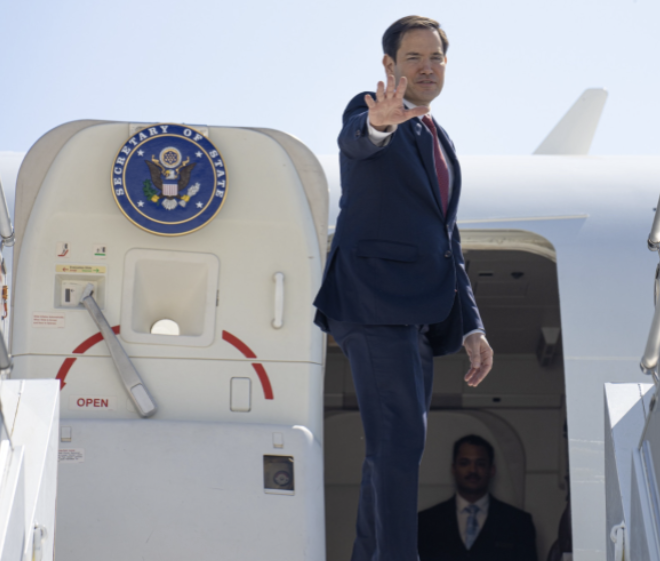WASHINGTON – Secretary of State Marco Rubio unveiled the start of a major reorganization on Tuesday to drastically reduce the size and scope of the State Department.
The plan reflected the Trump administration’s sweeping effort to cut back the federal government. The State Department’s reorganization reportedly would eliminate 132 domestic offices, cut around 700 positions and significantly reduce the number of offices and personnel within the department.
“Over the past 15 years, the department’s footprint has had unprecedented growth and costs have soared, but far from seeing a return on investment, taxpayers have seen less effective and less efficient diplomacy,” Rubio said in a statement on X. “Today is the day…redundant offices will be removed and non statutory programs that are misaligned with America’s core national interest will cease to exist under President Trump’s leadership.”
The consolidation reportedly includes eliminating various parts of the agency and requiring that State Department under secretaries propose across the board personnel reductions of 15%.
“For too long certain bureaus within the State Department worked against America’s core national interests,” Rubio said on X. “These sweeping changes will empower our talented diplomats to put America and Americans first.”
The effort would be implemented by the department over the next several months, according to an official statement. This move, similar to other cuts made by the Trump administration, was quickly criticized by congressional Democrats.
“Any changes to the State Department and USAID must be carefully weighed with the real costs to American security and leadership,” said Sen. Jeanne Shaheen (D-N.H.), the top Democrat on the Senate Foreign Relations Committee, posted on X. “When America retreats – as it has under President Trump – China and Russia fill the void.”
But state department officials said that the reorganization would allow the department to be in line with the interests of the administration, and that it is being done to create efficiency rather than erase critical programs.
“We all know that change is difficult, but in this particular case, it had to happen because of the bulk, because of the unsustainability of the size of the government,” said State Department spokesperson Tammy Bruce. “Just because a [bureau] is now folded into another larger bureau doesn’t mean that it’s gone or we don’t care. If a bureau is gone, it means that we’re looking at blending it in with the regional bureaus, taking certain issues away from being specialty issues, and making sure that they’re in the frameworks of the bureau so that they can be…dealt with as a whole…”
Earlier, the department released a “new organizational chart” that outlines some of the potential changes. When asked if DOGE, the Elon Musk-led department that has made several cuts throughout the federal government, was involved, Bruce said they were “not in charge of this.”
“This is a very good example of the continuation of [the DOGE] mission, and the value of that mission to cut the government down to size, get people used to that idea that it can happen without it being a bad thing.”
Democratic senators said they would have more to say about Rubio’s plans.
“As I and many of my Democratic colleagues have made clear, we welcome reforms where needed–but they must be done with care,” said Shaheen. “I will be scrutinizing these proposed reforms…and I will hold Secretary Rubio to his pledge to appear before our Committee and engage with Congress on the future of the State Department.”

